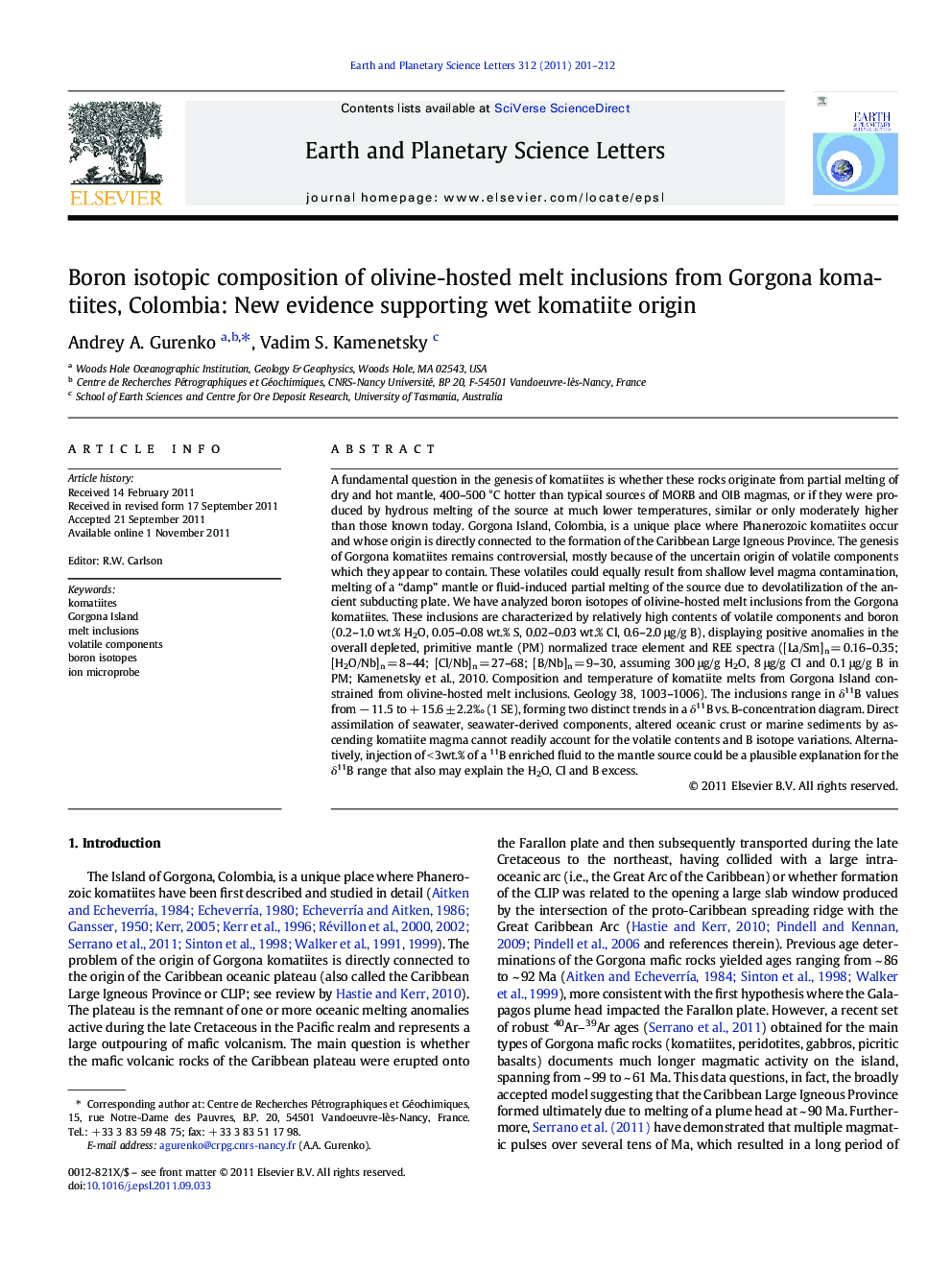| کد مقاله | کد نشریه | سال انتشار | مقاله انگلیسی | نسخه تمام متن |
|---|---|---|---|---|
| 4677789 | 1634816 | 2011 | 12 صفحه PDF | دانلود رایگان |

A fundamental question in the genesis of komatiites is whether these rocks originate from partial melting of dry and hot mantle, 400–500 °C hotter than typical sources of MORB and OIB magmas, or if they were produced by hydrous melting of the source at much lower temperatures, similar or only moderately higher than those known today. Gorgona Island, Colombia, is a unique place where Phanerozoic komatiites occur and whose origin is directly connected to the formation of the Caribbean Large Igneous Province. The genesis of Gorgona komatiites remains controversial, mostly because of the uncertain origin of volatile components which they appear to contain. These volatiles could equally result from shallow level magma contamination, melting of a “damp” mantle or fluid-induced partial melting of the source due to devolatilization of the ancient subducting plate. We have analyzed boron isotopes of olivine-hosted melt inclusions from the Gorgona komatiites. These inclusions are characterized by relatively high contents of volatile components and boron (0.2–1.0 wt.% H2O, 0.05–0.08 wt.% S, 0.02–0.03 wt.% Cl, 0.6–2.0 μg/g B), displaying positive anomalies in the overall depleted, primitive mantle (PM) normalized trace element and REE spectra ([La/Sm]n = 0.16–0.35; [H2O/Nb]n = 8–44; [Cl/Nb]n = 27–68; [B/Nb]n = 9–30, assuming 300 μg/g H2O, 8 μg/g Cl and 0.1 μg/g B in PM; Kamenetsky et al., 2010. Composition and temperature of komatiite melts from Gorgona Island constrained from olivine-hosted melt inclusions. Geology 38, 1003–1006). The inclusions range in δ11B values from − 11.5 to + 15.6 ± 2.2‰ (1 SE), forming two distinct trends in a δ11B vs. B-concentration diagram. Direct assimilation of seawater, seawater-derived components, altered oceanic crust or marine sediments by ascending komatiite magma cannot readily account for the volatile contents and B isotope variations. Alternatively, injection of < 3wt.% of a 11B enriched fluid to the mantle source could be a plausible explanation for the δ11B range that also may explain the H2O, Cl and B excess.
► Melt inclusions in olivine from Gorgona komatiites range in δ11B from − 10 to + 16‰.
► These inclusions contain 0.2–1.0 wt.% H2O, 0.02–0.03 wt.% Cl and 0.6–2.0 μg/g B.
► Shallow depth magma contamination does not explain the observed δ11B range.
► The δ11B range is due to the injection of < 3 wt.% of slab fluid into rising mantle plume.
► This result supports wet origin of komatiites from the Island of Gorgona, Colombia.
Journal: Earth and Planetary Science Letters - Volume 312, Issues 1–2, 1 December 2011, Pages 201–212